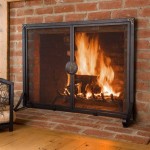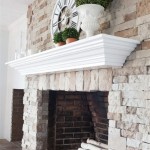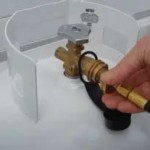Can You Paint A Metal Fireplace Door?
Metal fireplace doors, while functional and often aesthetically pleasing, can sometimes become outdated or simply not match the desired decor of a home. The question then arises: can one paint a metal fireplace door to refresh its appearance? The answer is yes, but the process requires careful preparation, the right materials, and a methodical approach to ensure a durable and attractive finish. Attempting to paint without proper procedure may result in chipping, peeling, or even hazardous fumes if the wrong type of paint is used.
The high temperatures that fireplace doors are subjected to are a critical factor. Conventional paint is not designed to withstand these conditions and will quickly degrade, releasing unpleasant odors and potentially creating a fire hazard. Therefore, the choice of paint is paramount. High-temperature paint, specifically designed for fireplaces, stoves, and other heat-generating appliances, is essential for a successful and safe paint job. These paints are formulated with resins and pigments that can endure elevated temperatures without breaking down or releasing harmful chemicals.
Before even considering paint, meticulous preparation is crucial. A clean and properly prepared surface is fundamental to achieving good adhesion and a long-lasting finish. Any existing rust, dirt, grease, or loose paint must be removed. This process typically involves a combination of abrasive techniques and cleaning solutions.
Key Point 1: Preparation is Paramount
The surface preparation stage is arguably the most important part of painting a metal fireplace door. It ensures proper adhesion of the new paint layer and prevents future issues like peeling or blistering. The steps involved in preparation are detailed and require patience:
First, remove the fireplace door from its frame. This allows for easier access to all surfaces and prevents paint from getting on the surrounding fireplace façade. Lay the door on a protected surface, such as a drop cloth or old newspapers. Use a wire brush or sandpaper to thoroughly remove any loose paint, rust, scale, or debris from the metal surface. Focus on areas where the existing finish is damaged or flaking. For stubborn rust, a rust converter may be necessary. This chemical treatment transforms the rust into a stable compound that can be painted over.
Next, clean the entire surface with a degreaser. This removes any grease, oil, or fingerprints that may interfere with paint adhesion. Wipe the surface clean with a lint-free cloth after applying the degreaser. Allow the surface to dry completely before proceeding. If the fireplace door has a glossy finish, lightly sand the entire surface with fine-grit sandpaper to create a slightly roughened texture. This provides a better "key" for the paint to grip onto. Wipe away any sanding dust with a tack cloth. At this point, the door should be clean, free of rust and loose paint, and slightly roughened to promote adhesion. Any shortcuts taken during this preparation phase will likely result in a less-than-satisfactory outcome.
Key Point 2: Selecting the Right Paint
The selection of paint for a metal fireplace door is limited but critical. Ordinary paint will not withstand the high temperatures generated by a fireplace. Only high-temperature paint specifically designed for this purpose should be used. These paints are often labeled as "stove paint" or "fireplace paint" and are available in aerosol cans or liquid form. The aerosol cans are typically easier to work with for smaller projects, while the liquid form can be applied with a brush or sprayer for covering larger areas. Regardless of the chosen form, it is imperative to read and follow the manufacturer's instructions carefully.
High-temperature paints come in various finishes, including matte, satin, and gloss. The choice of finish is largely a matter of personal preference, but it's important to consider the overall aesthetic of the room. Matte finishes tend to be more forgiving of imperfections, while gloss finishes are more reflective and easier to clean. Most high-temperature paints are available in a limited range of colors, typically black, gray, and brown. Some specialty paints may offer a wider selection, but these are often more expensive. When selecting a color, consider how it will complement the surrounding decor and the overall style of the fireplace.
Additionally, ensure that the selected paint is specifically designed for the type of metal the fireplace door is made of. Some paints are formulated for steel, while others are designed for cast iron. Using the wrong type of paint can result in poor adhesion or even chemical reactions that damage the metal. Check the product label carefully to ensure compatibility. Consider purchasing a small quantity of paint and testing it in an inconspicuous area to ensure that it adheres properly and provides the desired finish before applying it to the entire door.
Key Point 3: Application Techniques and Safety
Once the surface is prepared and the appropriate paint is selected, the application process can begin. Whether using an aerosol can or a brush, it's essential to apply the paint in thin, even coats. Multiple thin coats are always preferable to one thick coat, as this minimizes the risk of drips, runs, and uneven coverage. When using an aerosol can, hold the can approximately 10-12 inches from the surface and spray in a smooth, sweeping motion. Overlap each pass slightly to ensure complete coverage. If using a brush, use a high-quality brush designed for applying enamel paints. Apply the paint in long, even strokes, following the grain of the metal (if applicable).
Allow each coat of paint to dry completely before applying the next. The drying time will vary depending on the specific paint and the ambient temperature and humidity. Refer to the manufacturer's instructions for recommended drying times. It is usually necessary to apply at least two coats of paint to achieve full coverage and a durable finish. For areas that are subject to particularly high heat, consider applying a third coat for added protection. After the final coat of paint has dried completely, allow the fireplace door to cure according to the manufacturer's instructions.
Safety precautions are paramount when painting a metal fireplace door. Always work in a well-ventilated area to avoid inhaling harmful fumes. Wear a respirator or dust mask to protect your lungs from paint particles. Wear gloves to protect your skin from the paint. Avoid painting near open flames or sources of ignition, as some paints are flammable. Dispose of used paint cans and brushes properly, following local regulations. Allow the paint to fully cure before exposing the door to heat. Consult the paint manufacturer's instructions for specific safety guidelines and recommendations.
By carefully following these steps, it is possible to successfully paint a metal fireplace door and revitalize its appearance, adding a touch of personal style to a home's decor. The key is patience, attention to detail, and a commitment to using the right materials and techniques.

Fireplace Door Update With Spray Paint Roots Wings Furniture Llc

Fireplace Door Update With Spray Paint Roots Wings Furniture Llc

How To Spray Paint A Brass Fireplace Insert Erfly House

How To Paint Metal Fireplace Surround Four Generations One Roof

How To Spray Paint A Brass Fireplace Insert Erfly House

How To Paint A Brass Fireplace Screen Addicted 2 Decorating

Repainting Brass Fireplace Doors Spraypaint And Deglosser Remodel Frame

How To Refinish Rusted Fireplace Doors

How To Refinish Rusted Fireplace Doors

How To Spray Paint A Brass Fireplace Insert Erfly House
Related Posts








